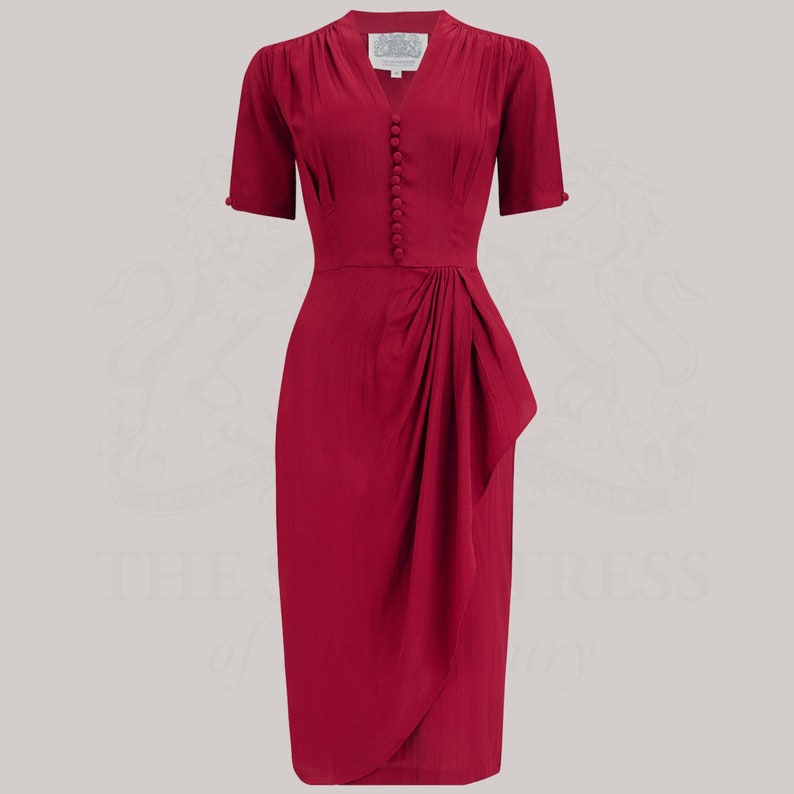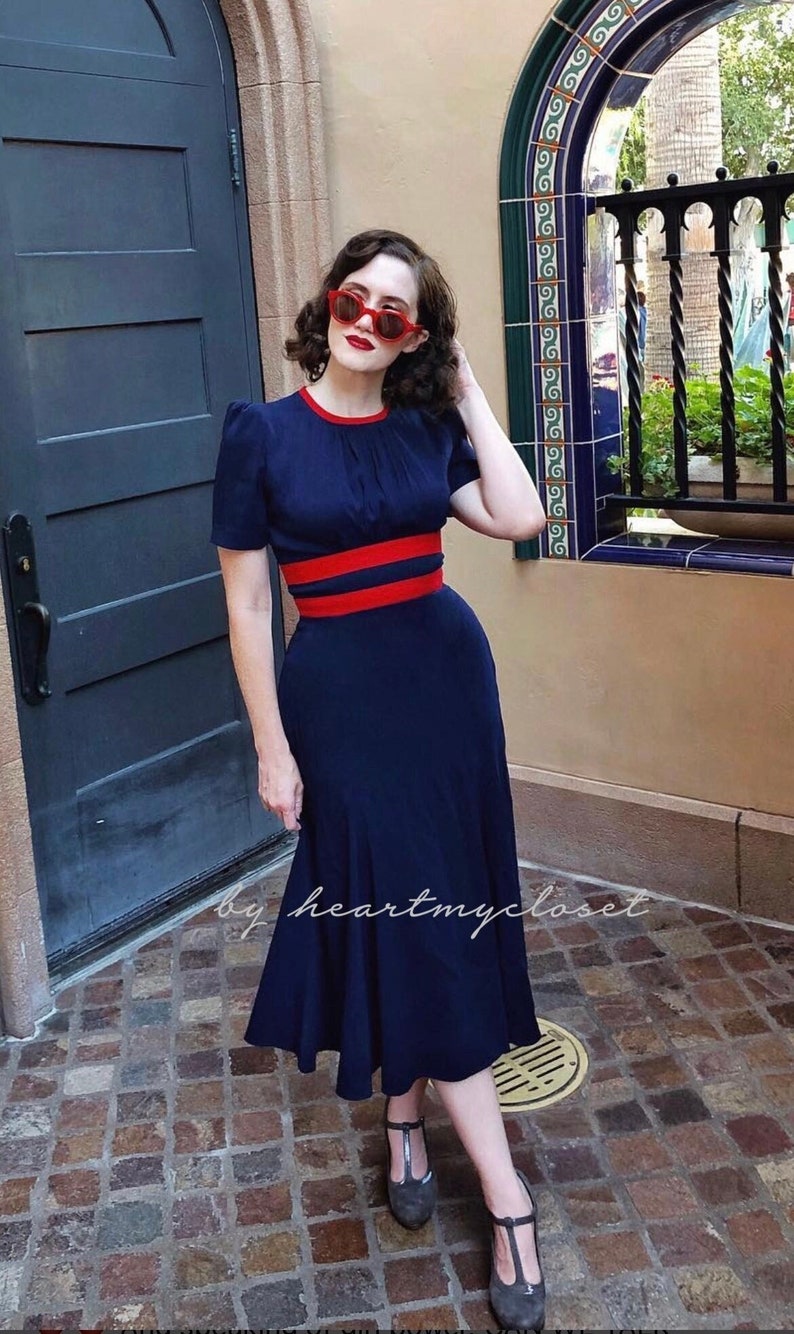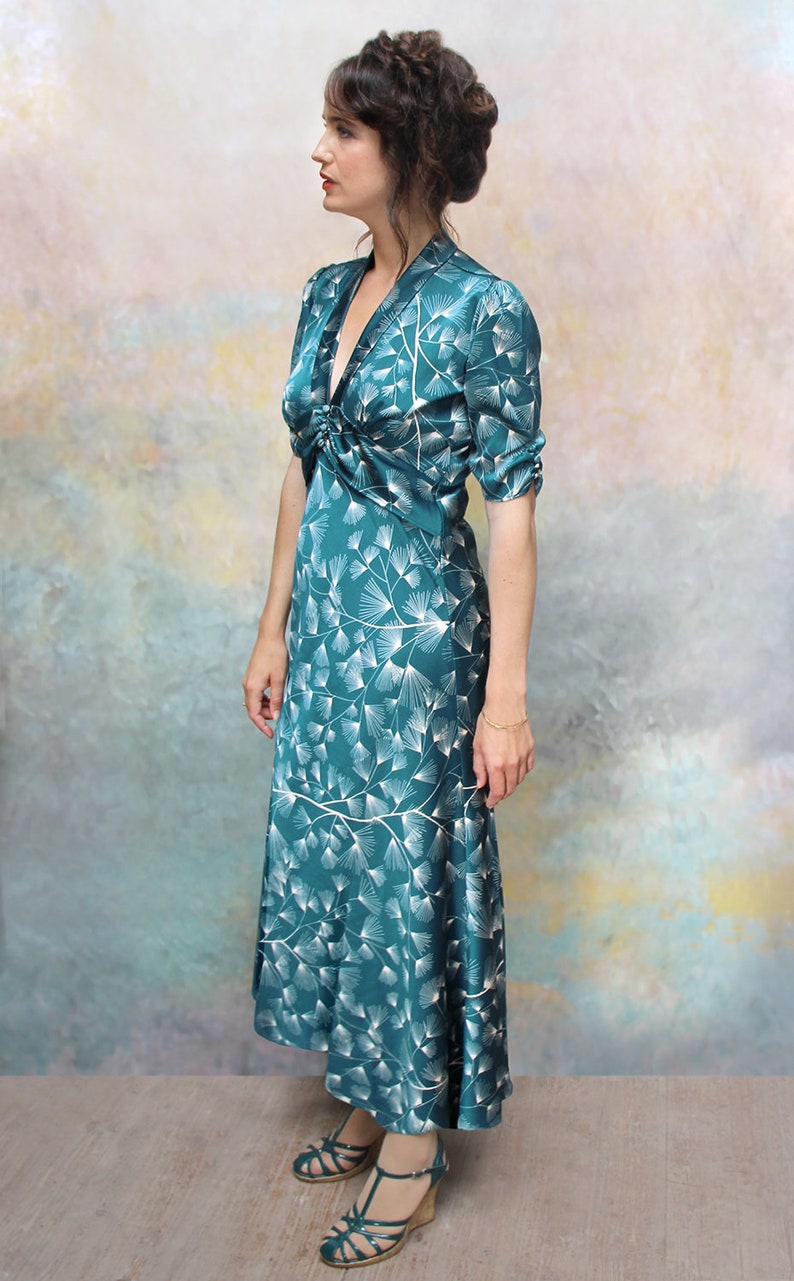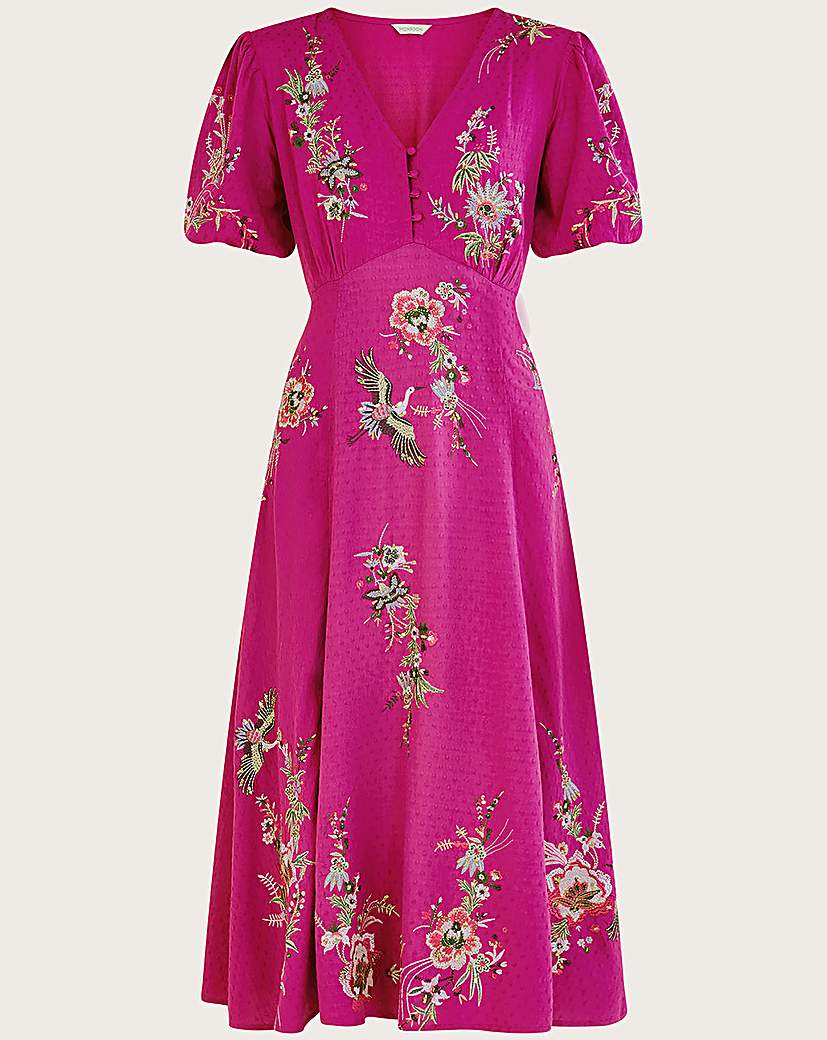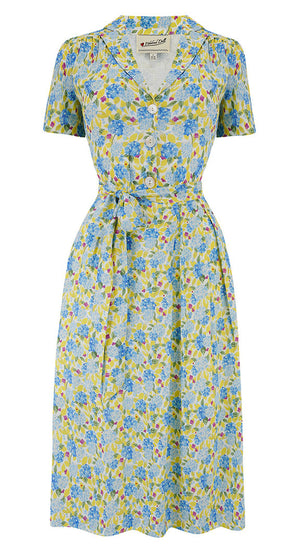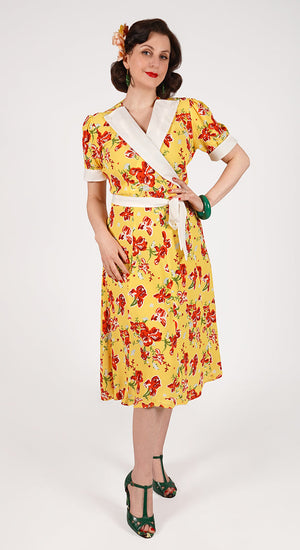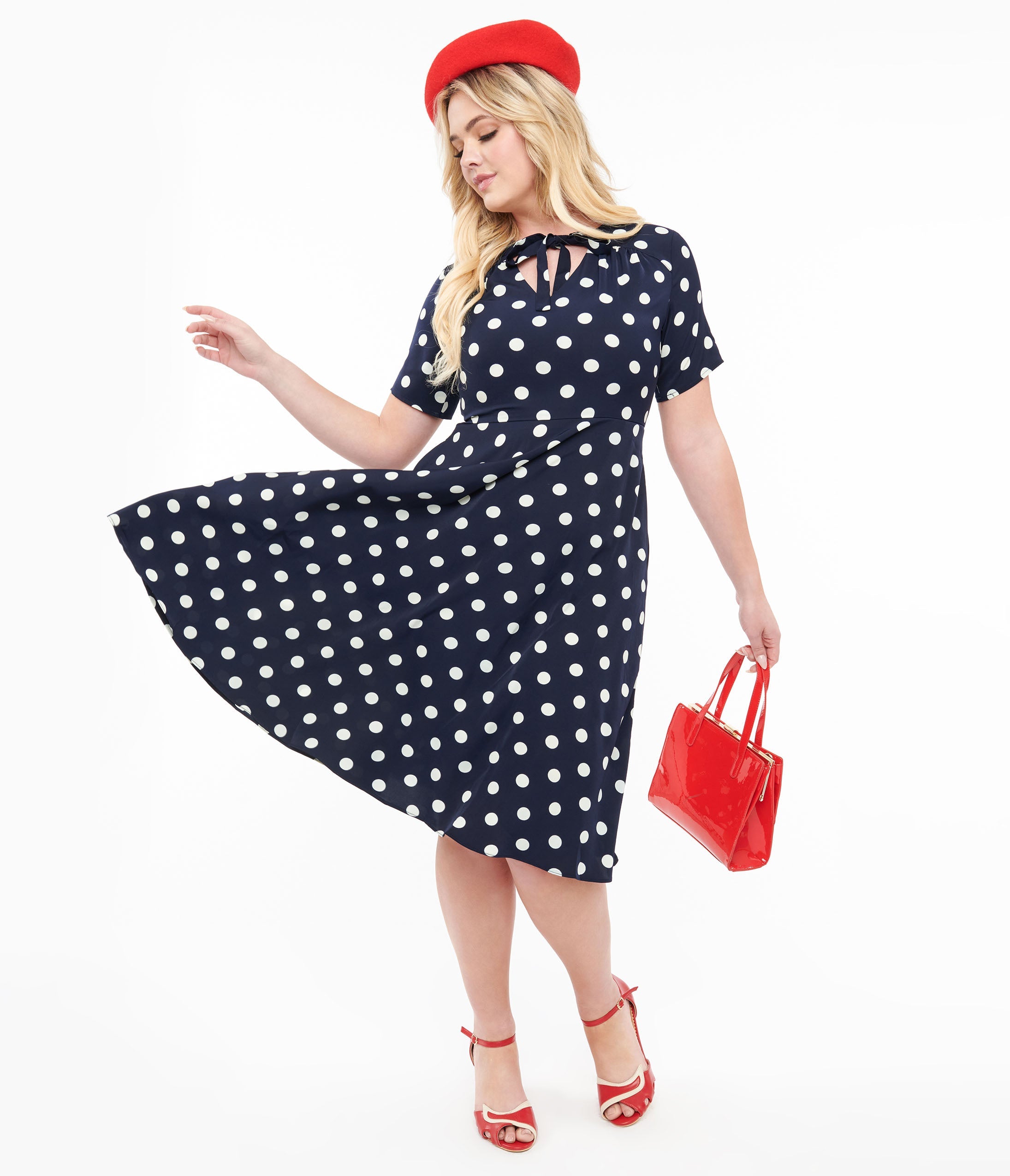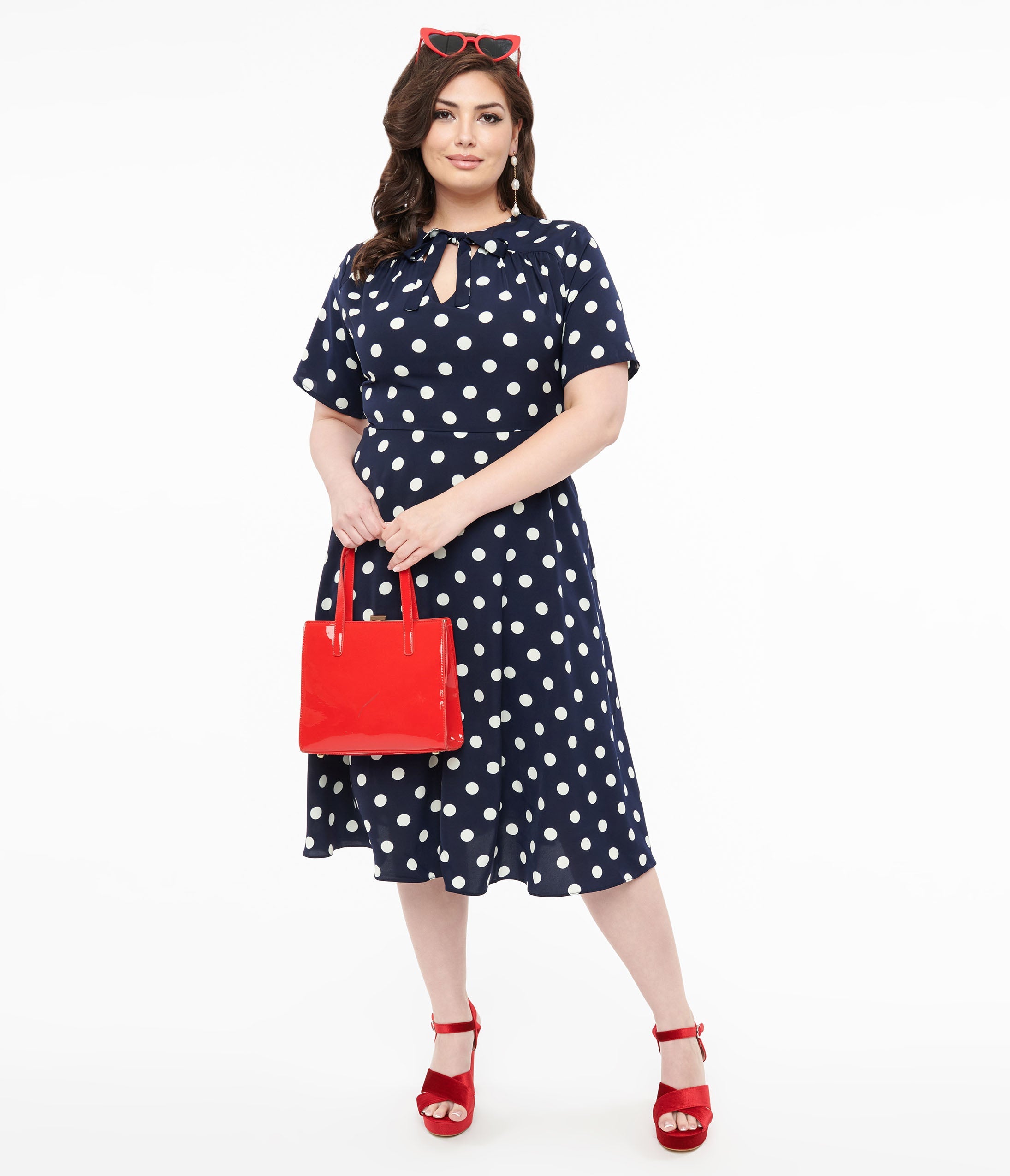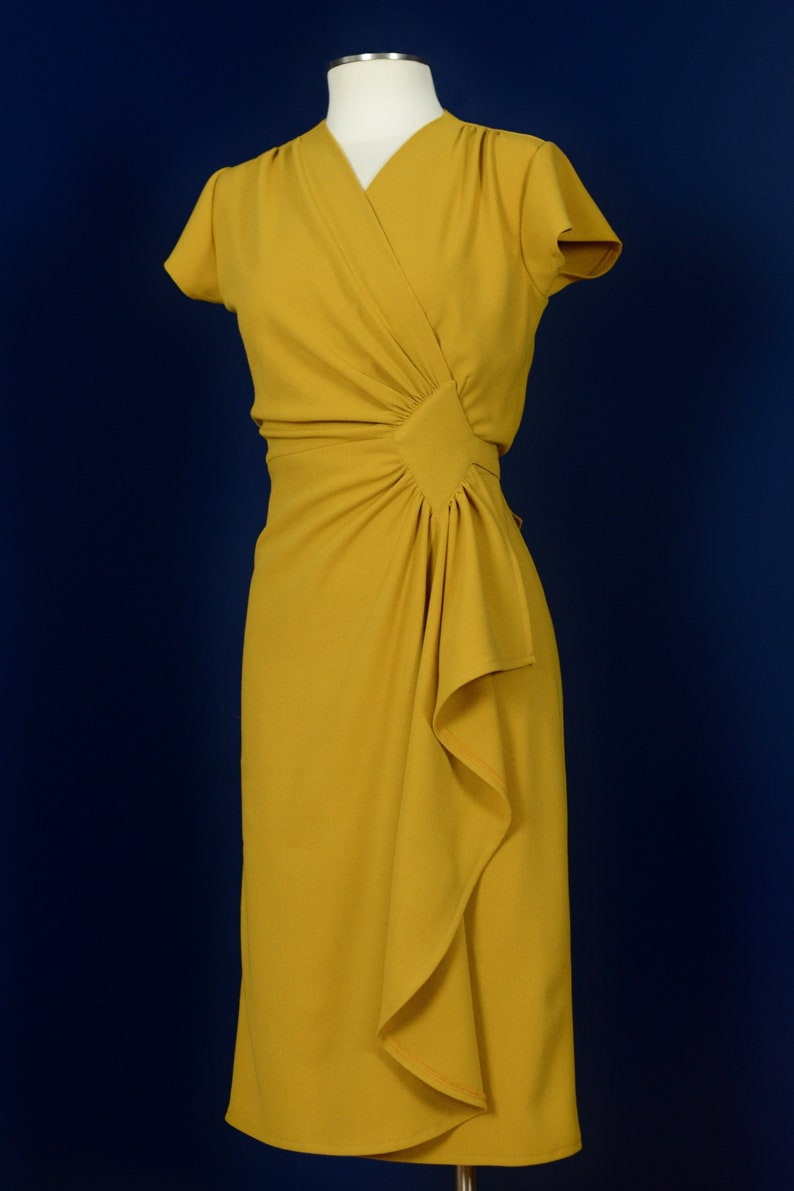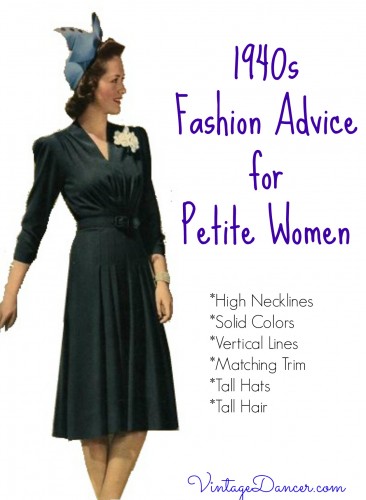 So far we have looked at 1940s fashion advice for plus sizes and tall figures. Now onto my area of expertise – SHORT women! In the 1940s, short women, called petite or little misses, could wear almost any of the regular size fashions with just a little chop of the hem. In theory this works well, but there are many designs which on a short woman make her look too “junior.” No woman in the 1940s wanted to look like a child. So with this in mind fashion experts hand out their advice on appropriate 1940s fashions suitable to a petite woman.
So far we have looked at 1940s fashion advice for plus sizes and tall figures. Now onto my area of expertise – SHORT women! In the 1940s, short women, called petite or little misses, could wear almost any of the regular size fashions with just a little chop of the hem. In theory this works well, but there are many designs which on a short woman make her look too “junior.” No woman in the 1940s wanted to look like a child. So with this in mind fashion experts hand out their advice on appropriate 1940s fashions suitable to a petite woman.
The following tips and advice are from several 1940s beauty books including “The Original Bonomo Hollywood Success Course Through Beauty of Face and Form” by Joe Bonomo, “Beautify Your Personality” by Hattie Marie Marsh, and “Beauty After Forty” by Edyth Thornton McLeoud.
1940’s Fashion for Petite Women
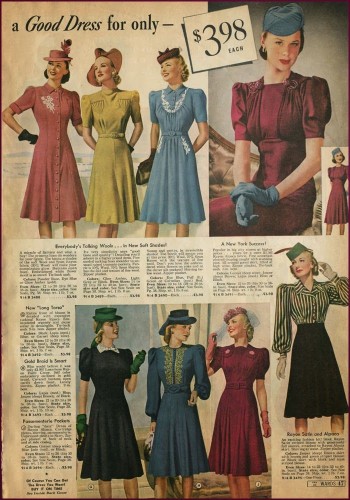
Early 40’s dresses in plain color and matching trim are all ideal for petite women
Dresses: Choose dresses with long vertical lines made by pleats, gathers, rows of buttons, contrast stitching, and trim. Be careful in trim of contrasting colors, especially white ruffles and bows. Petite dresses are best in plain colors and minimal trims. Avoid peplums and side draping. Shirtwaist dresses are a good choice.
Necklines: A high neckline in an oval or V neck shape is ideal. A small square neckline is also OK. Small round Peter Pan collars are a nice touch as long as they are in the same color as the dress. White collars will often look too junior.
Skirt: A separate skirt should be in the same color as the top. A contrasting color skirt is doable if you raise the waistband up a few inches. A skirt should be a narrow A-line or almost pencil shape rather than a fuller skirt.
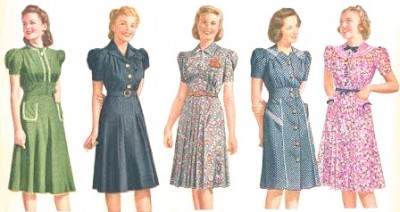
1941 day dresses in small prints, high collars, and vertical pleating.
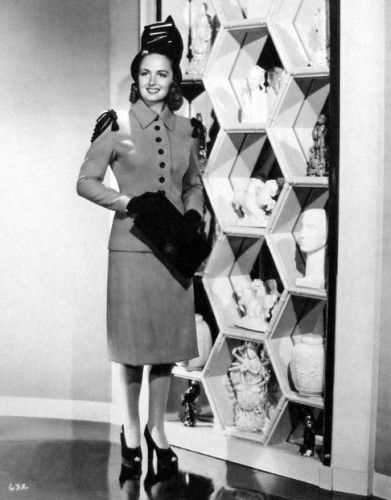
Donna Reed was a icon for petite women in the 1940’s. Here, her suit featured high button front which help make her look taller.
Sleeves: Choose fitted, narrow sleeves in a sleeveless, short, or long length. A mid-length is the least flattering.
Fabrics: Choose light fabrics that hug curves. The more of an hour glass figure you can show off, the more womanly and less childlike you will look. Fabrics should also be matte, not shiny.
Patterns: Plain colors are best, followed by small prints. Avoid large checks, plaids and horizontal stripes. Thin vertical stripes are good.
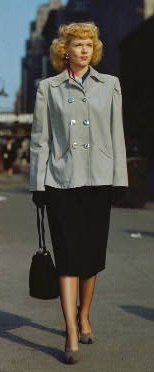
Dottie Reid, Jazz Singer, in a short sport coat
Coats: Long coats that hang to the edge of a dress hem (knee) will be the ideal length. They should fit straight with no hem flair or swing back to them. Shoulders should be a narrow fit. Coat lapels should also be small, never large peak lapels. Capes should be avoided. Small shoulder capes could be the only exception. A shorter box coat in a sport fit can look good on a petite figure. It is best to wear a sport coat in a color that contrasts with the dress and is worn open and unbuttoned. Tailored suit jackets, are the opposite, being in the same color and buttoning up high to the neck (see Dottie Reid photo above).
Hair Styles: Hair with height! Add volume on top and keep the sides sleek and smooth. A short bob haircut is also pleasing as long as it doesn’t make you look too young.
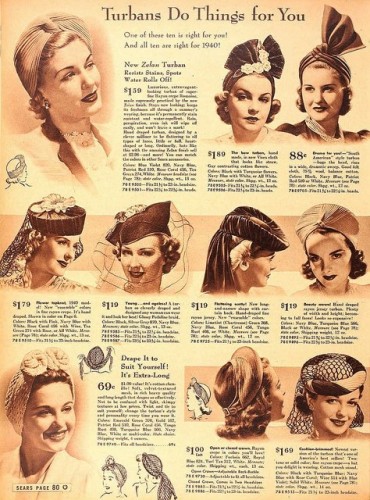
1940s turban hats are great for petite figures
Hats: Small berets, beanies, turbans are your specialty hat style. Otherwise, felt hats with a turned up brim and vertical trim add height.
Shoes: Avoid tall heels. A nice medium-tall heel will provide enough lift without looking like you are trying to hard to be taller. Match your hat and shoes for the ultimate height enhancer!
Accessories: Hats, gloves, purses, belt and jewelry should all be small items that match in color. Subtle colors are best, no bright or sparkling designs.
Jewelry: Dainty and small pearls in a single strand is all you need. Bracelets should also be single and of a narrow width. A brooch can often be too heavy. Chose wisely.
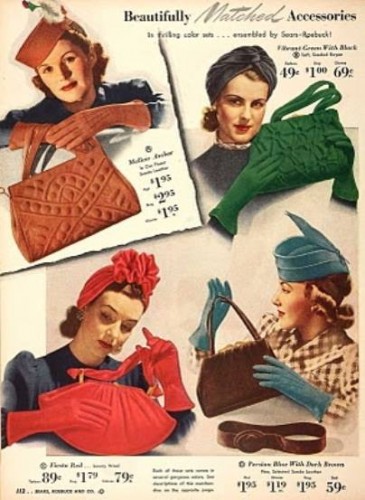
1940s shoes and accessories should match for petite women
New 1940s Dresses for Petite Women
Shopping for a petite length dress in a repro or vintage inspired style today? Yeah, you won’t find any. Taking up a hem is an easy fix for the novice sewer and alteration expert alike. If, however, you are also short in the waist, your dress may need more professional alteration to get it to fit right at your natural waist. Other than that, choices are plentiful for the petite figure. Here are a few of my favorites:
* Shop more dresses here.
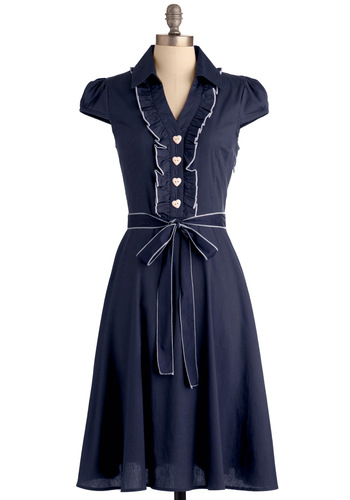
This shirtwaist dress is great for petites in the neutral colors. Avoid the back and white and polka dot options.
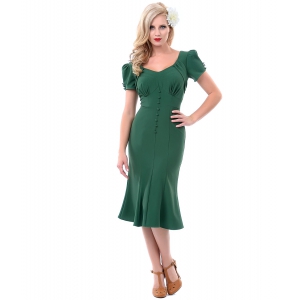
A classic 40’s dress with a row of center buttons adds that vertical line that helps build height. A Best seller at Unique Vintage
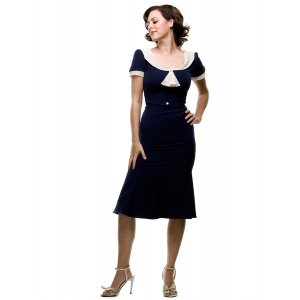
I have this dress and I think it looks amazing on my short figure. No fashion rules fit it, but it works anyways! At Unique Vintage
Shop 1940s Dresses
Debbie Sessions has been teaching fashion history and helping people dress for vintage themed events since 2009. She has turned a hobby into VintageDancer.com with hundreds of well researched articles and hand picked links to vintage inspired clothing online. She aims to make dressing accurately (or not) an affordable option for all. Oh, and she dances too.


